‘I have convinced my friends to refrain from Female Genital Cutting’

On January 27, 2018, Sahiyo hosted its fourth Thaal Pe Charcha (loosely translated as “discussions over food”) in Mumbai, India, with a diverse group of 18 participants. TPC is a flagship Sahiyo program where Bohra women are brought together in a private, informal setting to bond over food and discuss issues that affect their lives, particularly Female Genital Cutting or Khatna. The participants, six of whom were men, discussed ongoing developments around the movement to end khatna. Men were invited to share their own experiences of male circumcision as well as comment on the Khatna experience of young girls in the community or within their families. The participants were eager to be proactive in raising awareness about the harmful effects of Khatna on girls. One male participant shared that he convinced his mother and wife not to cut their seven-year old daughter by explaining the possible damage it could do to a child’s body and mind. He said, “I have also convinced my friends and their wives to refrain from doing this practice. There is just no need for it.” Towards the end of the event, Sahiyo organized a special healing session for the women participants, conducted by a well-known alternate healing therapist who specializes in reconnective healing therapy. The therapist, Shabnam Contractor, is a member of the Bohra community and was able to understand how FGC might have affected the women participants. In the hour-long session, she helped participants explore aspects of their lives that may have been affected by undergoing FGC. After the session, most women experienced a sense of relief and expressed an interest in more such sessions in subsequent events.
The movement to end FGM/C: Looking back at the 2010s and looking forward in 2020
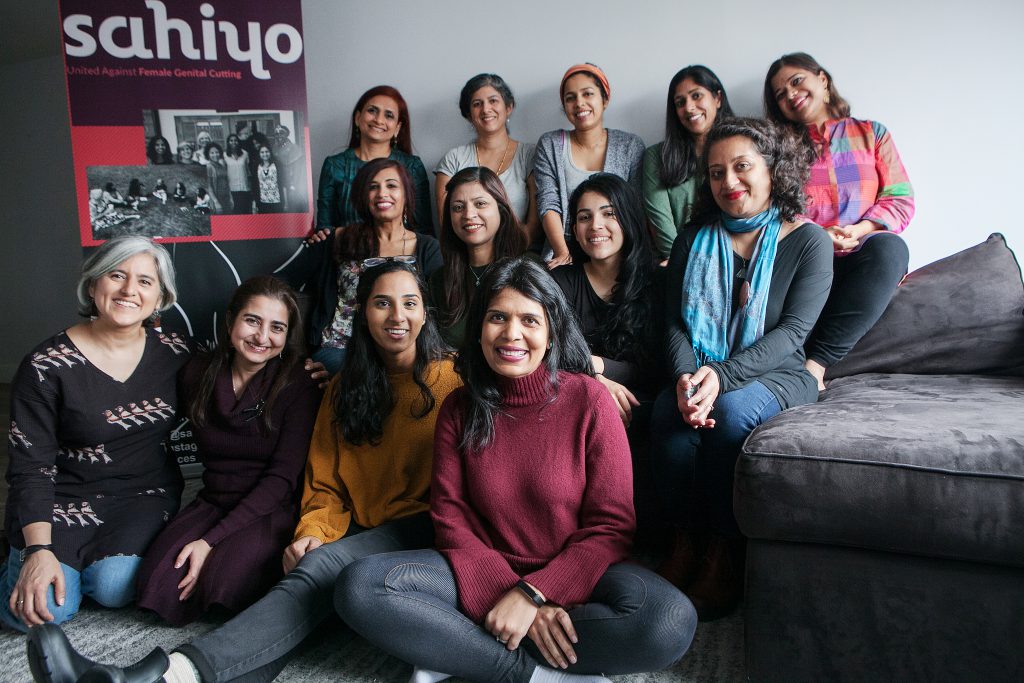
By Sahiyo 2020 is here, and we at Sahiyo are excited. 2020 brings with it not just a new year, but the dawn of a new decade of hope and hard work for our global movement to end female genital cutting (FGC). This is the decade in which we must give it our all, because we have pledged to achieve the United Nations Sustainable Development Goal of eliminating Female Genital Mutilation/Cutting by 2030. As we look forward to the 2020s, we cannot help but look back at the 2010s for inspiration. The last decade has been game-changing, not just for Sahiyo or the movement against FGC among the Dawoodi Bohras, but for the anti-FGC movement in Asia as a whole. At the start of 2010, FGC was still considered an “African” problem, and Asian countries were barely on the map of the places where FGC is prevalent. Today, we know that FGC is truly and disturbingly a global phenomenon putting 3.9 million girls at risk every year, as you can see in this map created by Orchid Project: Nearly half the countries on the map above are not yet included in the UN’s official list of 30 countries where 200 million women and girls have undergone FGC. In the 2020s, let us work to ensure that this information gap is bridged, so that Asian survivors of FGC are officially recognised. In fact, you can start now by signing Sahiyo’s petition asking the global community to invest in research on FGC prevalence and advocacy and support services to end FGC in Asian countries. But first, let’s take a look back at the biggest milestones of the 2010s from Sahiyo’s perspective. The birth of Sahiyo: In late 2011, ‘Tasleem’, an anonymous Dawoodi Bohra woman from India, started a Change.org petition asking the Syedna, the religious leader of the Dawoodi Bohra sect, to call for an end to FGC in the community. Although there had been scattered attempts to call out the secretive practice of FGC among the Bohras in the 1980s and ‘90s, they drew limited attention and the practice continued to be shrouded in silence. Tasleem’s petition, however, received nearly 3,500 signatures, triggered a spate of media reports on FGC in India, and inspired a few Bohra women, like Aarefa Johari and Farida Dariwala, to speak out publicly about their experiences of FGC. The media reports on FGC at the time also inspired Sahiyo co-founder Priya Goswami to make A Pinch of Skin, the first documentary film on FGC among Dawoodi Bohras in India. As Goswami’s film won the 2013 National Award for the best documentary in India, the taboo topic of FGC remained alive in the media, sparking private conversations between like-minded Bohra women all over the world who were keen to see an end to FGC. In late 2014, five of those women banded together to create a formal platform that would work to end FGC among Bohras and Asian communities at a transnational level. That platform — Sahiyo — was eventually founded in mid-2015. Breaking the silence, once and for all: In 2015, the private conversations on FGC among Bohras also burst into the public sphere with the launch of WeSpeakOut (known as Speak Out on FGM at the time). WeSpeakOut started as a private women’s WhatsApp group spearheaded by Masooma Ranalvi. In October 2015, the group launched a Change.org petition addressed to the Indian government, seeking a legal ban on FGC in India. Seventeen Bohra women publicly put their name to the petition, and the response was huge and immediate: media all over India began writing about FGC among Bohras, community leaders were forced to respond, and the silence about FGC among community members was broken for good. More than 200,000 people have signed the petition so far. From 2015 to 2019, we have watched the movement against FGC snowball into a global force that communities have not been able to ignore. There are now dozens of Bohra women fearlessly speaking out about their FGC experiences, signing up as Sahiyo volunteers, attending our events and pledging not to cut their daughters. Women and men have faced backlash from their families and communities for speaking out, but the movement has only grown stronger. Research and investigations: In February 2017, Sahiyo released the results of the first-ever research study on FGC among Bohras: an online, exploratory survey that found an 80% prevalence rate of FGC among Bohra women respondents. Among those who were cut, 98% women reported feeling pain when they underwent the ritual. Interestingly, 81% of respondents did not want FGC to continue in the community. In 2017, a Sahiyo investigation also revealed that FGC is being practiced by some communities in the South Indian state of Kerala, leading to furore in the region. Before this, it was believed that the Bohras are the only community in India practicing FGC. In 2018, WeSpeakOut published a seminal field study on FGC among Indian Bohras. The study found FGC prevalent among 75% of the daughters of the respondents. At least 33% of the respondents who were cut reported that FGC negatively impacted their sexual lives. More research on the FGC in Asian communities is the need of the hour, and we are aware of several studies that are currently underway in various parts of Asia. Continuous research can help us better understand not only the prevalence and impact of FGC on women and girls, but also the needs of survivors and trends towards abandonment of the practice. Developments on the legal front: The 2010s were a landmark decade for FGC on the legal front, particularly for the Dawoodi Bohra community. Australia: In 2015, three Bohras — a mother, a nurse and a community leader — were convicted for performing FGC on two minor girls in Australia. This was Australia’s first case under its 1997 law banning FGC. However, the legal ups and downs did not end with the conviction in 2015. In 2018, an appeals court overturned the convictions
Understanding the Supreme Court’s latest judgement mentioning female genital cutting in India
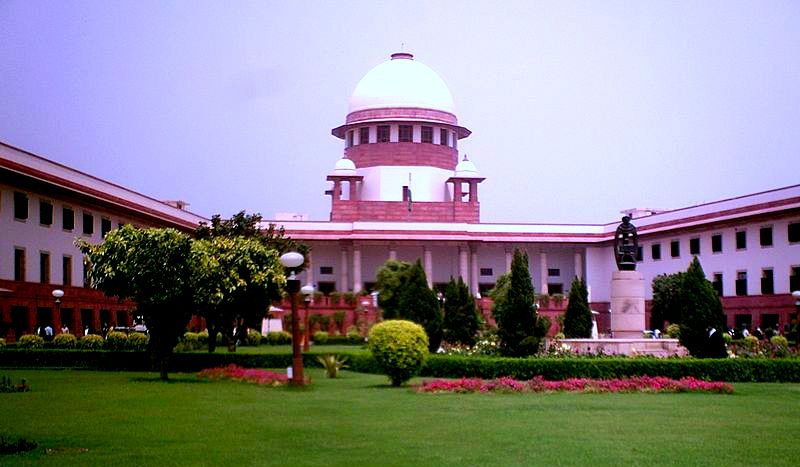
On November 14, after a year of silence on the female genital mutilation/ cutting (FGM/C) case pending before it, the Supreme Court of India mentioned that the case will be referred to a seven-judge Constitution bench. It is likely that the case will now be heard in conjunction with three other petitions dealing with women’s rights and freedom of religion: cases about Hindu women’s entry into the Sabarimala temple, Muslim women’s entry into mosques, and the entry of Parsi women married to non-Parsis into fire temples. Previously, in its September 2018 order, the Court had referred the FGC case to a five-judge Constitution bench. Since then, the case had been pending. On November 14, however, the Supreme Court brought up the FGC case while hearing a batch of review petitions in the case about Kerala’s Sabarimala temple, where women of menstruating age were traditionally not allowed to enter. The review petitions challenged the Court’s 2018 order which lifted the ban on women’s entry into the temple. In its November 14 judgement, a five-judge Supreme Court ruled that the debate on women’s entry into the temple overlapped with other cases about gender and religious rights that are pending before the Court, including women’s entry into mosques and fire temples and female genital mutilation/cutting among Dawoodi Bohras. It stated that a larger bench first needs to rule on the interpretation of the very principles governing the fundamental right to freedom of religion in the Constitution, before passing judgement on all of those cases from different communities. The implications of clubbing these various cases under one umbrella are yet to be seen, but the Court’s judgement does raise some concerns. Although these cases share the common theme of women’s rights within religion, the cultural ritual of cutting minor girls’ genitals is very different in substance from the rules restricting women’s entry into places of worship. It would be ideal if each of these issues are evaluated separately, on a case-by-case basis. Sahiyo believes that the matter of FGC needs to be treated with a little more urgency. Fourteen months have already passed since the Supreme Court first referred the FGC case to a Constitution bench last year. That bench was never formed, and now the Court’s decision to first adjudicate on larger questions of law is likely to stall hearings that may have been scheduled in the FGC case. Since the practice of FGC involves causing bodily harm to young girls, every delay puts more girls at risk of being cut. A quick recap of the FGC case In April 2017, Delhi-based lawyer Sunita Tiwari filed a Public Interest Litigation (PIL) in the Supreme Court seeking a ban on the practice of female genital cutting (also known as khatna, khafz, sunnath or female circumcision) in India. FGC is practiced among the Dawoodi Bohras and other Bohra sects in India, as well as among certain Sunni Muslims in the state of Kerala. Tiwari’s PIL, however, refers only to FGC among the Dawoodi Bohras. After Tiwari’s PIL was admitted in the Court, other intervention petitions were also filed in the case, some supporting a ban on the ancient practice, and one party (the Dawoodi Bohra Women’s Association for Religious Freedom) defending FGC on the grounds that it is an essential religious practice for the Bohras. The Dawoodi Bohra Women’s Association demanded that the matter of FGC be heard by a Constitution bench since it was about the Constitutional right to religious freedom. The case was heard by a three-judge bench which observed during a hearing in July 2018, that the “bodily integrity of women” cannot be violated. However, in September 2018, the bench referred the case to a five-judge Constitution bench. This meant that the practice of cutting a girl’s genitals — which the United Nations classifies as a human rights violation — would now be scrutinised through the lens of religious freedom. In light of the latest Supreme Court judgement, this will continue to be the case, except that now a larger, seven-judge bench will first examine the interpretation of Articles 25 and 26 of the Constitution pertaining to the right to religious freedom, before adjudicating on matters of FGC and women’s entry into places of worship. What the Court said: Majority and Minority judgements The Supreme Court’s judgement on November 14 was not unanimous. Three of the five judges on the bench delivered the majority judgement, in favour of referring the Sabarimala, FGC and other cases to a seven-judge Constitution bench. This 9-page majority judgement was authored by Chief Justice Ranjan Gogoi. The other two judges (Justices Nariman and Chandrachud) authored an elaborate 68-page dissent, insisting that there was no merit to the review petitions in the Sabarimala case and that the other cases of FGC, mosque entry or fire temple entry should not be clubbed together with the Sabarimala issue. The majority judgement stated the following: “The issues arising in the pending cases regarding entry of Muslim Women in Durgah/Mosque;…of Parsi Women married to a non-Parsi in the Agyari;…and including the practice of female genital mutilation in Dawoodi Bohra community…may be overlapping and covered by the judgment under review. The prospect of the issues arising in those cases being referred to larger bench cannot be ruled out…The decision of a larger bench would put at rest recurring issues touching upon the rights flowing from Articles 25 and 26 of the Constitution of India.” The majority judgement specified that the larger bench would essentially have to answer seven questions about the principles of Articles 25 and 26. These questions include these four points: What is the interplay between Constitutional freedom of religion and other rights granted in the Constitution, particularly the right to equality and prohibition of discrimination on the grounds of religion, sex, race, caste, etc? What exactly does “constitutional morality” mean? To what extent can the Court determine whether a practice is essential to a religion or a religious denomination? To what extent can the Court give judicial recognition to
એક સાઈકોથેરૅપિસ્ટ તરીકે, હું ક્યારેય ખતનાની ભલામણ નહિં કરું

(This article was first published in English on December 10, 2016. Read the English version here.) લેખક : અનામી ઉંમર : 36 વર્ષ દેશ : ભારત હું એક માનસિક આરોગ્ય ચિકિત્સક છું અને છેલ્લા 16 વર્ષોથી હું તેનું કાઉન્સેલિંગ અને થેરાપી આપી રહી છું. મારા ઘરનાં લોકો મારી એક કઝિનની સેરિમનિ વિષે બોલતા હતા ત્યારે અનાયાસે જ મને ‘ખતના’(ટાઈપ 1 એફ.જી.એમ.) વિષે જાણવા મળ્યું. હું વધારે માહિતી મેળવવા માંગતી હતી. મને સમજાયું નહિં કે હું પણ તે પ્રક્રિયા હેઠળથી પસાર થઈ હતી. મને વધારે કંઈ યાદ નથી, બસ આટલું કે મને બળતરા થતી હતી અને ત્યારબાદ મારી માં અને નાની દ્વારા તપાસવામાં આવી રહી હતી. તે એક હરામની બોટી હતી જેને મારા શરીરમાંથી કાઢી નાખવામાં આવી હોવાથી મારે તે વિષે ક્યારેય વાત કરવી જોઈએ નહિં તેવા વાતાવરણમાં હું મોટી થઈ. મને કહેવામાં આવ્યું હતુ કે હવે તુ શુદ્ધ થઈ ગઈ છે. હું મોટી થઈ તેમ મેં સાઈકૉલોજીનો અભ્યાસ કર્યો, હું એફ.જી.એમ. વિષેનો એક આર્ટિકલ વાંચતી હતી ત્યારે અચાનક જ મને સમજાય ગયું કે તે દિવસે મારી સાથે શું બન્યું હતુ. મને ધક્કો લાગ્યો પરંતુ, તેને સ્વીકારવા સિવાય મારી પાસે કોઈ વિકલ્પ નહોતો કારણ કે જે કંઈ બન્યું તેની કોઈ અસર સમજાઈ નહોતી – મારા પ્રગતિશિલ માં-બાપને પણ નહિં. મારૂં જીવન અન્ય છોકરીઓની જેમ આગળ વધવા લાગ્યું. મારૂં લગ્ન જીવન, ખાસ કરીને સેક્સ પર તેની કોઈ અસર થઈ નહિં. મારૂં સેક્સ્યુઅલ જીવન અને ઑર્ગેઝમ્સ પણ સંતોષપૂર્ણ હતા અને મેં મહેસુસ કર્યું કે મારા પર ખતનાનીં કોઈ મોટી અસર થઈ નહોતી અથવા સાત વર્ષની ઉંમરે હું જે પ્રક્રિયા હેઠળથી પસાર થઈ તેનાં આઘાતનો સામનો કરવા મેં એ બાબતને એકદમ દબાવી દીધી હતી. જો કે, મને યાદ છે કે બાળકનાં જન્મ સમયે મારે એપિસિઓટોમી પ્રક્રિયા કરાવવી પડી હતી. UNFPA દ્વારા કરવામાં આવેલ એક સ્ટડી અનુસાર, એક સામાન્ય બૈરીની સરખામણીએ જે બૈરી પર જેનિટલ કટિંગની પ્રક્રિયા કરવામાં આવી હોય તેને સિઝેઅરિયન સેક્શન અને એપિસિઓટોમી ની વધારે જરૂર પડે છે અને બાળકનાં જન્મ પછી વધારે સમય હૉસ્પિટલમાં રહેવું પડે છે. આ વર્ષની શરૂઆતમાં પીઅર સુપરવિઝનમાં, મારી સાથે જે કંઈ બન્યું તેની પ્રક્રિયાને મેં ધીરે-ધીરે સમજી અને તેને જીવનનાં એક ભાગ રૂપે લીધી. મને એ બાબત પાછળથી સમજાઈ કે એફ.જી.એમ. ની અસરો થાય છે. હકીકતમાં તે આત્માને જખમો આપે છે અને આપણને આશ્ચર્ય થાય કે શું આ પ્રક્રિયા કરવી ખરેખર જરૂરી છે. ખતના પ્રક્રિયા લાંબા સમય સુધી માનસિક તણાવ આપી શકે છે. કુટુંબનાં સભ્યો દ્વારા ભરોસો તોડવાની લાગણીને કારણે તે બચ્ચાઓનાં વર્તનમાં ગરબડ પેદા કરી શકે છે. મોટી છોકરીઓ પણ બેચેની અને તણાવ મહેસુસ કરી શકે છે. જે આવી બધી બાબતો સમજે છે, તેવા એક મનોચિકિત્સક તરીકે શું હું ખતનાની ભલામણ કરીશ? ના, હું ભલામણ નહિં કરું કારણ કે, મને લાગે છે કે તેનો મુખ્ય હેતુ બૈરીઓની સેક્સ્યુઆલિટી પર નિયંત્રણ લાવવાનો છે. હું તેની વ્યાખ્યા લિંગ આધારીત હિંસા રૂપે કરીશ.
टैटू, महिला खतना और पाखंड
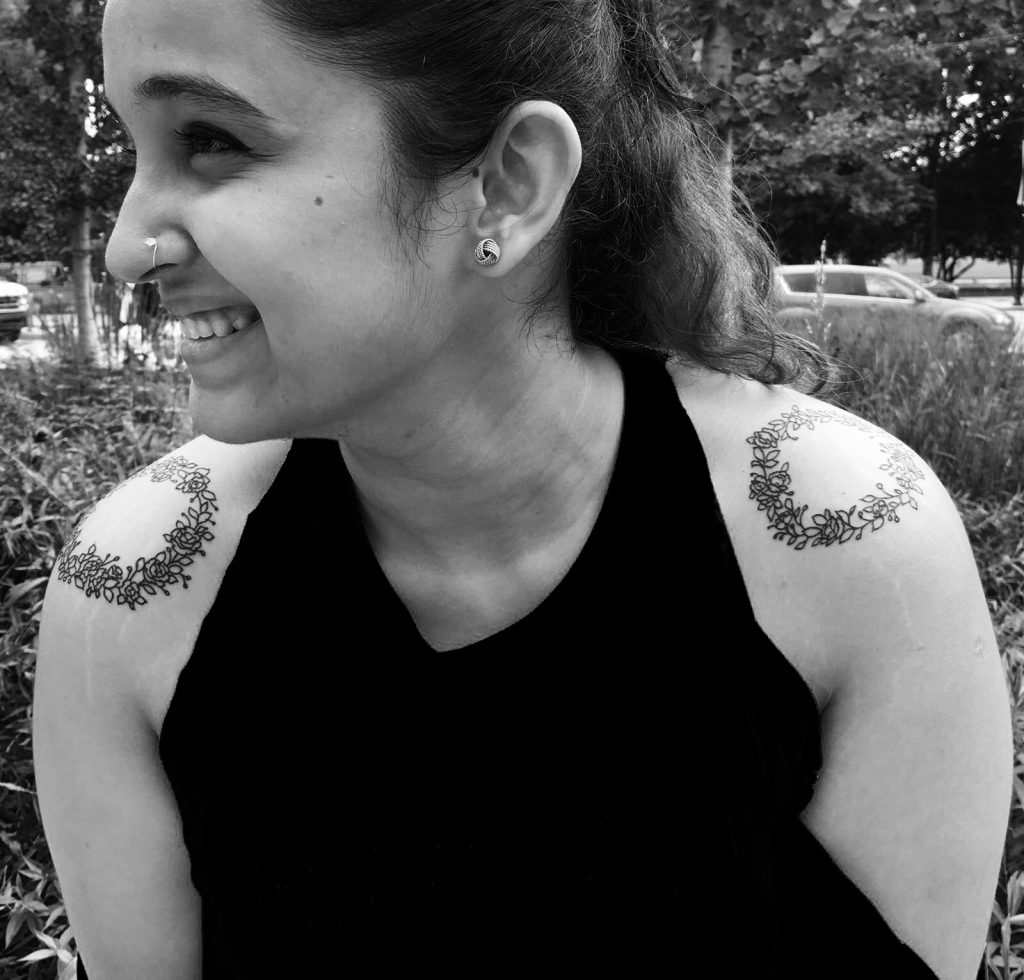
(This piece was originally published in English on November 25, 2016. Read the English version here.) अज़रा एदनवाला उम्र: 21 देश: अमेरिका / भारत कुछ समय पहले मैं साहियो नाम के एक संगठन से मुख्तलिफ हुई। उस समय तक मैंने अपने खतने के बारे में कभी सोचा नहीं था। सच कहु तो मुझे पता ही नहीं था की इसका मतलब क्या है। जब मैंने उन महिलाओं के लेखों को पढ़ा, जिनका खतना हुआ था, तब मुझे एहसास हुआ की इस भयानक परंपरा का एक शिकार मैं भी थी। मैंने तो बस इस याद को अंतर्मन में दबा दिया था, क्यूंकि मैं नहीं जानती थी की ये परंपरा कहाँ से आयी और इसका मतलब क्या है। मैं शायद 5 या 6 साल की थी। अपने परिवार के साथ छुट्टी पर थी। गुजरात में कोई इलाका था, जहाँ तक मुझे याद है। इसके अलावा और कुछ याद नहीं, सिवाय दर्द से भरे कुछ छितरे-बिटरे पलों की। मुझे एक गंदे से बाथरूम में ले जाया जाना याद है, साथ में एक पुरूष या एक महिला थीं, सफ़ेद कपड़ों में। मुझे कैंची याद है, और मुझे खून देखना याद है। मुझे रोना याद है। क्योंकि मेरे जननांगों पर एक पट्टी लगाई गई थी। मुझे याद नहीं है कि किसी ने मुझे बताया हो, कि मेरे साथ अभी यह सब क्या हुआ था या क्यों हुआ था। सब कुछ हमेशा की तरह चलता रहा, मानो कुछ घटा ही न हो। और मैंने भी उसे मान लिया, क्यूंकि मुझे यह पता ही नहीं था की मेरे शरीर के साथ क्या किया गया है। वैसे तो मेरे खतना ने न ही मेरे मन पे कोई गहरी छाप छोड़ी है, न ही मेरे जीवन जो किसी तरह बदला है। हालांकि जो चीज़ मुझे खुरेदती है वह यह है की आखिर ये शरीर मेरा है, और किसी को भी इसे बदलने का कोई भी अधिकार न तो कभी था, न है। खासकर वैसे हानिकारक बदलाव जो “जैसे चलता है, वैसे चलने दो” की सोच के साथ आएं। तीन साल पहले मैंने अपना पहला टैटू करवाया था। जब मेरे एक रिश्तेदार ने मेरे शरीर पर इस टैटू को देखा, तो उन्होंने कहा, “तुम मुस्लिम हो। और हमारा धर्म यह बताता है कि शरीर को ठीक उसी तरह अपनी कब्र में लौटना चाहिए, जैसा की वह माँ की कोक से निकला था। दूसरे शब्दों में कहा जाए, तो हमें अपने शरीर में कोई बदलाव नहीं करना चाहिए और इसे वैसे ही स्वीकार करना चाहिए जैसा की हमें अल्लाह ने दिया है। अगर ऐसा है, तो मेरे गुप्तांगों को क्यों काट दिया गया? यह कैसा पाखंड है? कोई भी धर्म सिर्फ अपने सुविधानुसार अपने नियम नहीं बना सकता। हमें यह समझना होगा की धर्म आखिर हमीं ने बनाया है, और हमें उन रीती-रिवाज़ो का पालन करना छोड़ना होगा जो परंपरा के नाम पर चलती आ रही है। हम एक आधुनिक समाज में रहते हैं, और जहां हम अभी हैं उस जगह पर हम इसलिए पहुँचे हैं क्योंकि हमने परिवर्तन को अपनाया। महिला जननांग खतना इस्लाम में एक महिला के आस्था को निर्धारित नहीं कर सकता है। मुझे यह प्रथा बड़ी छिछली लगती है, और मुझे नहीं लगता कि किसी को भी इस प्रथा का पालन करना चाहिए, विशेष रूप से छोटे बच्चों को, जिनको पता ही नहीं है कि उनके साथ क्या हो रहा है। हो सकता है की खतना का मुझपर ज़्यादा गहरा असर नहीं पड़ा है, लेकिन ऐसी बहुत सी महिलाएं है जिन पर असर हुआ है। प्रत्येक महिला को अपने शरीर पर अधिकार होना चाहिए क्योंकि ऐसे भगवन में विश्वास रखने का कोई मतलब नहीं है जो जाहिर तौर पर ऐसी भयानक और अमानवीय प्रथा का समर्थन करते हैं।
My mother thought she was saving me with khafz
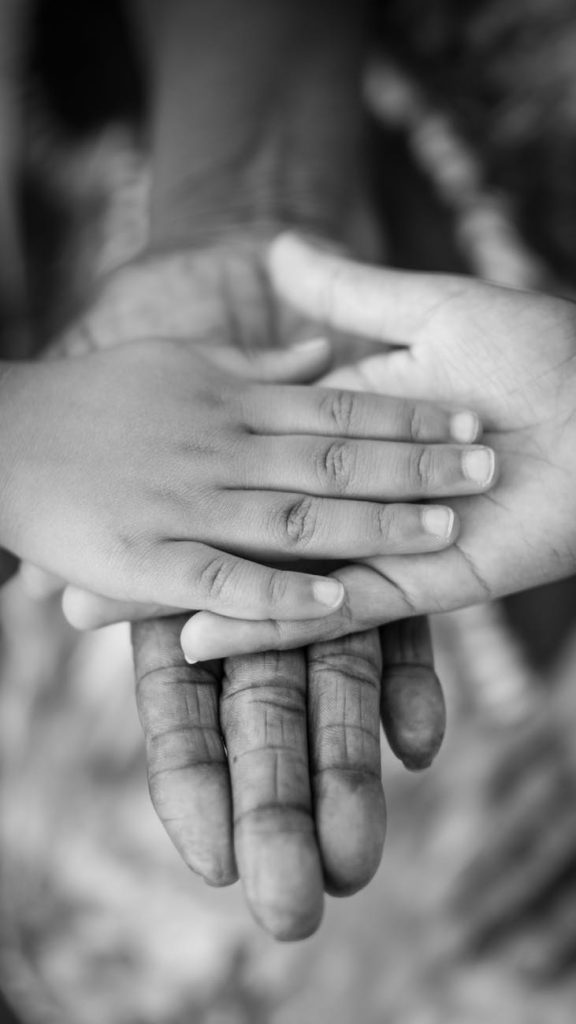
Photo Courtesy Of Kristin De Soto on Pexels.com By Rashida I can recall with crystal clear memory my mother taking me at around age 7 to a dilapidated old Chawl style building in a Bohra Mohalla in Bhendi Bazaar. My mom wore a dark orange saree with a green, white and light orange geometrical design. We climbed up broken wooden steps to go to the first floor on which there were several rooms with closed doors. We knocked on one of those doors and a lady quietly let us in. We sat down on the bare carpet and my mom greeted her with a salaam. The lady disappeared behind a curtained door. I know she came back with washed hands because my mom made me do the traditional salaam that we do to the elders, and her hands were wet and smelled of soap as I kissed them. The lady sat down across from us and I kneeled down to do the salaam. As I was finishing the salaam the lady pulled my pants down. My mom pulled me back, held my hands and covered my face with her sari and put her face in the sari folds so I could see her face, too. I felt a searing pain between my legs and I began to cry, and my mom made big scolding eyes (that’s how she always silenced me to show me her disapproval), and I reduced my crying to a slow whimper. I was very frightened and had no idea what was happening. The lady squeezed the tip of my clitoris firmly with a ball of cotton soaked in red mercurochrome as a final move. She told me to keep that ball of cotton in place and not to touch it until it remained stuck to my clitoris. My pants were pulled up and I sat in my mom’s lap sobbing. The lady appeared again from behind the curtained door and was drying her hands nowon a napkin. She pried open my clenched fist andforced two Parle G glucose biscuits into it, and I clutched them while clinging to my mom in a petrified state with the other hand. My Mom did salaam to the lady with an envelope filled with money and we began to leave. I walked out very slowly holding my mother’s hand and we began to descend the staircase. My mom picked me up and carried me down. I remember that moment most vividly today because my mom had stopped carrying me since I was so tall and grown up. I was relieved and happy that she was carrying me because she had not done that in a very long time. Mom then called for a passing taxi cab. We took taxicabs only for special occasions like a wedding or if we had too many people in a group. I looked up and asked her, “Mummy, we are going in a taxicab to uncle’s home? It is only half full?” And she just smiled and asked me to eat the biscuits. The taxicab drove us to my uncle’s home (my mom’s brother) and as I was playing outside a few hours later, I overheard my mom talking quietly to my aunts (her sister and sister-in-law). “Oh, I thought Rashida would cry and scream,” she said. “She was so good, and look she is already running around. You cannot even tell it has happened. I was told she would shout and kick her feet. But she is all okay.” Mom said she was relieved that the deed was done. Later that afternoon, I told my mom about the bloody ball of cotton that was still loose and lying around in my underwear and she threw it away for me. My brothers were playing around and my 11-year-old brother asked me, “What happened to you? Did somebody do something to you?” He must have overheard the adults talking. He does not remember this incident. I just ran away too scared to answer. The community is getting regressive and male-dominated and under the influence of clergy clout. Despite FGM/C education, the social pressure to follow the diktats is palpable, real and fearful. Social boycott and fear of Laanat holds back the followers in shackles of complete submission. The issue of equality is a blatant cover-up. The clitoral hood is clearly called “Haram ni Boti” in all sermons and all discussions that are held privately in the community. “This piece of flesh has to be taken out or the girl will be sexually promiscuous.” The Sabak or lessons given by the priests and their wives at the mosques, preach to the parents and especially to the mothers that “your daughters will have an extramarital affair or pre-marital sex if you do not do this. Save your family’s name by doing khafz.” I do not hate my mother for doing FGM/C to me. She was an educated woman of her times with a BSc, B.Ed., and an M.S. in Chemistry. She was a teacher and retired as principal of her school. She was a victim of this procedure, too. My mother thought she was saving me. I am sure there was a lot of social pressure from the family and community. My only conversation with her was a casual single comment she uttered as she overheard my friend complaining about health issues her young daughters were facing. My mom quietly said, “We do a procedure to our girls that prevents urinary tract infections in young girls.” I was embarrassed and knew she was referring to FGM/C. So I said, “No, mom, that is wrong and not true!” Mom just walked away. My friend had no idea what we were talking about. We had no conversation about FGM/C or what happened to me at all thereafter. My mom passed away very young at 61 years of age and I will never have my questions answered. I love my
I still don’t get why my mom took me there: A Bohra survivor of female genital cutting speaks out

Photo Courtesy Of luizclas on Pexels.com By Anonymous Country of Residence: India Age: 31 Many communities across the world continue to practice female genital mutilation (FGM). In India, it’s mainly the Bohras, a sub-sect of Shias who practice FGM, also known as khatna. The clitoris and/or labia of little girls is cut or mutilated with the belief that it would curb their sexual desires and stop premarital sex. Many of the women performing khatna have no medical qualifications and are typically women who have learned to perform the cutting from their ancestors. Many midwives perform this in the name of salwaat (or blessings). But they hardly know why they are doing this. When you are a child, your parents and grandparents are people you trust the most. They tell you about not interacting with strangers or not allowing any stranger to touch you in your private areas. Still it’s your close family who takes you for khatna, allowing a complete stranger to touch you inappropriately and cut your clitoris. It’s like being betrayed by the people you believe in and trust the most. I am writing this to share my experience. At the age of six, I was taken out by my mom like any normal day, although most of my childhood memories haven’t made as strong of an impact as this one. We reached a stranger’s place. I went inside the house with my mom. My trousers were removed and then I was told to lie down. I felt extreme pain in my private area. I could feel, although I was instructed to look at the ceiling. I was doing that, and within a few minutes, my mom said, let’s leave. I was still experiencing the pain. The pain was terrible when I urinated. I never really understood why my mom took me there. I still don’t get it. Why do something terrible to a girl which can leave a psychological scar in their mind which never heals? In fact, when I became a teenager, I asked my mom why she allowed this khatna to happen to me. The answer I got was tradition, and that it prevents cancer. Then the other question which immediately popped up for me was, “Why only us?” Later I found out it’s mostly done to curb the sexual desire of girls. This practice ultimately leads the girls to mistrust the people they are supposed to trust the most. It’s not in that instant you realize what happened, but gradually the memory becomes too vivid. Just because something is practiced for generations doesn’t mean it should go on without questioning its existence. People have to change their thinking about existing rules and guidelines to follow in the name of customs. The problem is that if you come out of the shadows and rebel, you may be thought of as an outcast. It’s not us we are afraid of but people we know. Family and friends will be treated differently as well. I believe in taking small steps of at least opening up about what you feel will help you to let go of that which you are suppressing. That will ultimately will give you the confidence of coming out of the shadows and facing the light.
Sahiyo Hosts ‘Thaal Pe Charcha’ Iftar Party in Mumbai

On May 11, Sahiyo India hosted a special Thaal Pe Charcha “Iftar” dinner in Mumbai during the holy month of Ramzan. The event was attended by 24 women and men from the Bohra community, who came together to break their Ramzan fasts and also mark two years since Sahiyo launched its flagship programme of Thaal Pe Charcha. Loosely translated as “discussions over food”, Thaal Pe Charcha provides community members with a safe and intimate platform to share their stories, experiences, and feelings about the practice of Female Genital Cutting, while bonding over traditional Bohra food. At least 50 community members have participated in Thaal Pe Charcha events over the past two years, and the Iftar dinner on May 11 saw five new participants join in, with several questions about the nature of the practice of FGC in the community, the arguments for and against it, and the work done by the movement against the practice. Two of the participants also brought their children for the event, including the seven-year-old daughter of Zohra, an FGC survivor. Girls in the Bohra community are typically cut at age seven, and Zohra expressed pride in the fact that she would not be continuing the practice on her daughter. The first Thaal Pe Charcha in Pune cityEarlier, in April, a Bohra FGC survivor and activist from Pune city hosted a small Thaal Pe Charcha lunch at her own home. The survivor, who identifies herself with the pseudonym Xenobia, had participated in Sahiyo India’s 2019 Activists’ Retreat in January. One of the workshops at the retreat was about hosting one’s own Thaal Pe Charcha in order to expand the conversations about FGC to more people. Xenobia was one of the first participants to volunteer to host her own Thaal Pe Charcha after the workshop, and the lunch she hosted at her house had 7 participants. Read about Xenobia’s experience of hosting the lunch in her own words, by clicking here.
The experience of hosting my very own Thaal Pe Charcha
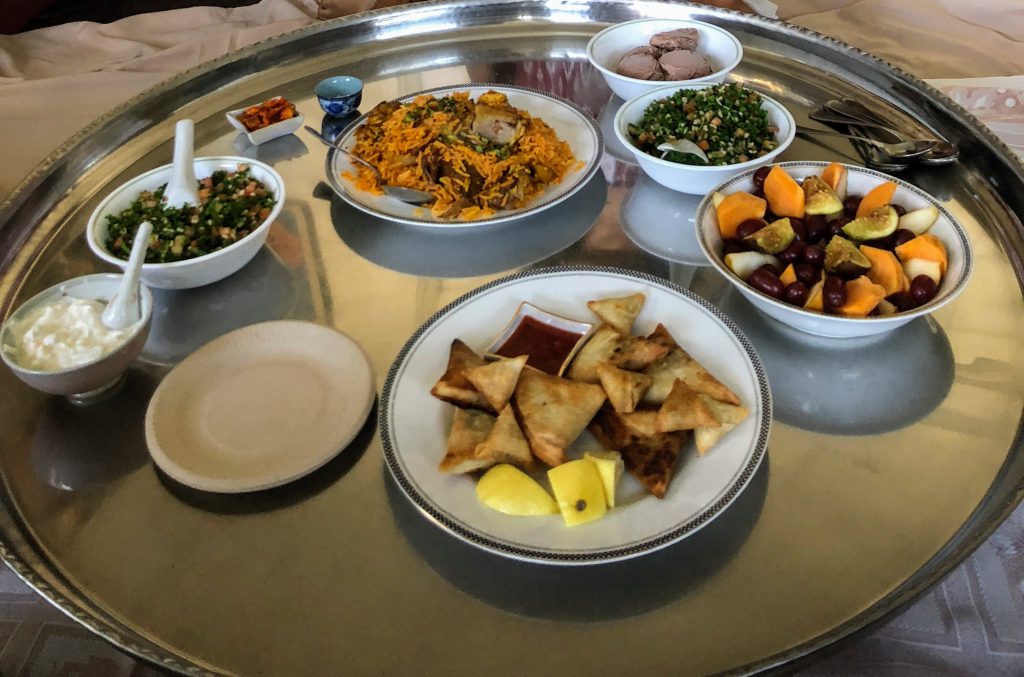
By Xenobia Country of Residence: India Earlier this year in January, I attended the Sahiyo’s Activist Retreat in Mumbai, where I met some brilliant, fantastic people from all walks of life. Women shared their experiences, stories and life-lessons, and talked about how female genital mutilation/cutting (FGM/C) had impacted their lives, either directly or indirectly, and what they were doing about it. Shortly after I returned home to Pune, my mind was filled with a bunch of ideas that involved reaching out to more Bohra women, hearing about their experiences with the community in general, and speaking to more women of substance. One of the training sessions at the Sahiyo Activist Retreat was on how to host one’s own ‘Thaal Pe Charcha’ (TPC, loosely translated as ‘discussions over food’). Representational photo of Thaal Pe Charcha cuisine Thaal Pe Charcha is a flagship Sahiyo program that brings Bohra women together in an informal, private space, so that they can bond over traditional Bohra cuisine while discussing FGM/C and other issues that affect their lives. I felt that the next logical step for me was to host my very own TPC. It would give me the opportunity to meet and talk to more women from my city about certain community-centric issues that affect all our lives. Even though I have never really been an activist myself, I knew of Sahiyo, and the cause that they have been fighting for. I admired and respected them, and I had silently been fighting for the same cause all my life, too. Did I have my fair share of apprehensions? I absolutely did. And why wouldn’t I? In a closely-knit community like ours, where one person’s word is law, it is so hard to try to reason with women and mothers, to give them more clarity by pleading with them to not hurt their children. Often, they never seem to be able to see beyond how you are “going against the community” or “against Moula”, even though the point has never been about that. There is a fine line between following someone and blind faith. No matter which country you are in, child abuse is still child abuse, irrespective of what you choose to call it or who performs it. For my TPC, I managed to invite a few women for lunch – a mix of friends, cousins, acquaintances and colleagues. It was also the first time I had ever hosted a Bohra get-together by myself, without the usual family members around to really help me. So for me, that itself was a personal milestone. Strangely, I felt it brought me a step closer to warmly embracing other nicer aspects of our culture – getting people together, bonding over food, and discussing the many facets of our little world. The conversations bordered around what each one was doing in their lives, professionally and otherwise. We discussed issues such as soft-feminism, journalism, opinions on certain movies and the debate on whether wives should take their husbands’ surnames after they are married. For a couple of the women who attended, FGM/C was a new concept they had never spoken about before. They asked questions about why it is performed, when they heard of it, and why we needed to stop practicing it on the next generation, especially since conversations around this topic have always been taboo for some strange, secretive reason in our community. The younger minds agreed that all customs with no solid reasoning usually always die a natural death, because no one likes doing things without a valid reason. Having access to the right answers and accurate information definitely helped each of them in getting more clarity on the topic, even though not every single person wanted to necessarily talk about their personal experience. It is still daunting to talk about something so personal in front of a bunch of strangers. But for me personally, it was important that the topic was at least touched upon, so that other women realise that this is a safe, non-judgemental place and that they could reach out to me if they wanted to speak about anything that bothered them at all. Apart from that, I do enjoy bringing new people together and nurturing relations with those I care about. So all in all, this was extremely special to me. While this event was still pretty small-scale, I would love to host and be a part of bigger TPCs eventually, where more women can come together and share their stories, opinions and ways to raise awareness about the harms caused by the practice in question, and how we can all work together to promote the abandonment of FGM/C and save the many generations of girls and women in the future from physical, mental, emotional and psychological damage.
Survivor of Mumbai: Plight to End Female Genital Cutting

By Brionna Wiggins (An alias was provided to protect the survivor’s identity and family.) There was once a girl who was seven-years-old in Mumbai, India. She and her mother visited a woman so that she could have her “khatna” done. Her mother was an educated woman and later a principal of a school. Today, she was having done to her daughter what her mother had done to her. The mother did her research too, because the woman they visited was known to be quick and effective. There were claims that she inflicted the least amount of pain possible. The little girl paid her respects to the woman who would do the khatna without quite knowing why she was there. Before she knew it, she felt the pain. Then the woman guided her to the sink to wash her hands and pressed two cookies in her small palm–cookies that had been a favorite treat until then. After the procedure was over, the mother carried the girl down the stairs. She was considered a “big girl” at the time and hadn’t been carried in ages. They got a taxi as well, despite the family being poor. The mere presence of the taxi testified to the importance of the event, not to mention the trouble she would have walking back to her uncle’s house. The mother spoke with an aunt there, saying she thought her daughter would cry for hours; but she seemed fine now, though. However, she was far from fine. Fatima wouldn’t talk about this event for another four decades. As an adult, Fatima gained the courage to speak up about FGC. Three years ago, when Masooma Ranalvi started to advocate against the practice, Fatima found her voice. A survey by Sahiyo was also done, which revealed that no one spoke about the practice, but continued it even though the community that practiced it was considered educated and progressive. Female genital cutting (FGC) was a generational secret that about 80% of the surveyed population underwent. There is an understandable cause for worry within the community if one does not undergo it. Skipping out on the procedure could lead to a handful of issues, including a loss in social standing, or the local clergy harassing parents if you’re in the United States with your family back in India. Families persuade their women to have their daughters cut they believe to purify them and prevent promiscuity. Some succumb to the pressure, while others lie that the procedure was done so the constant nagging can subside. There’s also the option of vacation cutting (sending the girl away on a “vacation” for her to be cut) for those in America. Even all the way in Detroit, a personal shame makes it so that one may only talk about it amongst their closest friends. Fatima knows another woman, a lawyer in Houston, who went to Pakistan at age seven in order to be cut. It’s believed by some to be the ideal age because the girl is young and submissive, but old enough to remember what was done to her and continue the tradition when she has daughters. Fatima is happily married with her husband and has two adult children, both boys. However, if she ever had a daughter, she would not have let her undergo FGC. A friend of hers commented on this once, claiming she was fortunate to not have to deal with female issues, like urinary tract infections. Fatima’s mother was visiting at the time and overheard their conversation. Her mother said something along the lines of, “Oh, our girls don’t get infections because we have this done to them,” referring to FGC. The friend did not know of FGC and probably would have asked more if Fatima didn’t interject. “That’s not true,” she told her visibly shocked mother. “Let’s not talk about it now.” Unfortunately, the time to talk about FGC never came for Fatima and her mother. When thinking about her late mother, Fatima believes that she would be upset with herself in learning that while her mother had the intention to genuinely help Fatima, the incident only harmed her at seven-years-old, and still does today. Fatima doesn’t have any physical problems as a result of being cut, but the trauma from the event still resides within her. After all these years, she remembers the pain. She believes that she lives a relatively normal and happy life, but the memory of being cut is there. She can’t talk about it without crying, even though she doesn’t want to cry. “Why was this done to me?” Fatima said that she didn’t want her tears to weaken the message to end cutting. Fatima wants FGC survivors to open up, speak up, and get the help they need. The next generation needs to be protected and supported. Fatima said that even with leading a relatively normal life, the trauma is still there. “I will never be a full woman. I will never know [the] full sex experience, and I will never know how it feels to be uncut.” More on Brionna: Brionna is currently a high school senior in the District of Columbia. She likes drawing, helping others, and being able to contribute to great causes.
